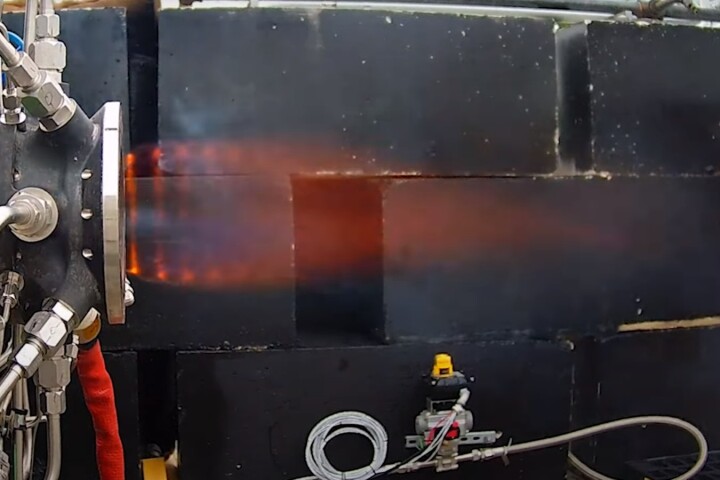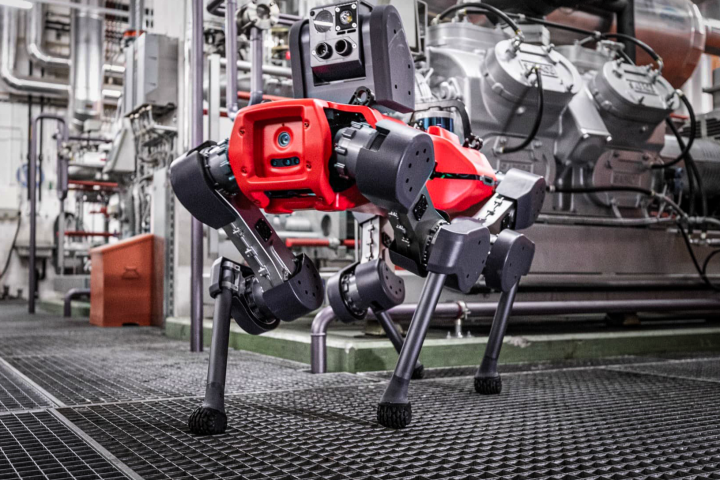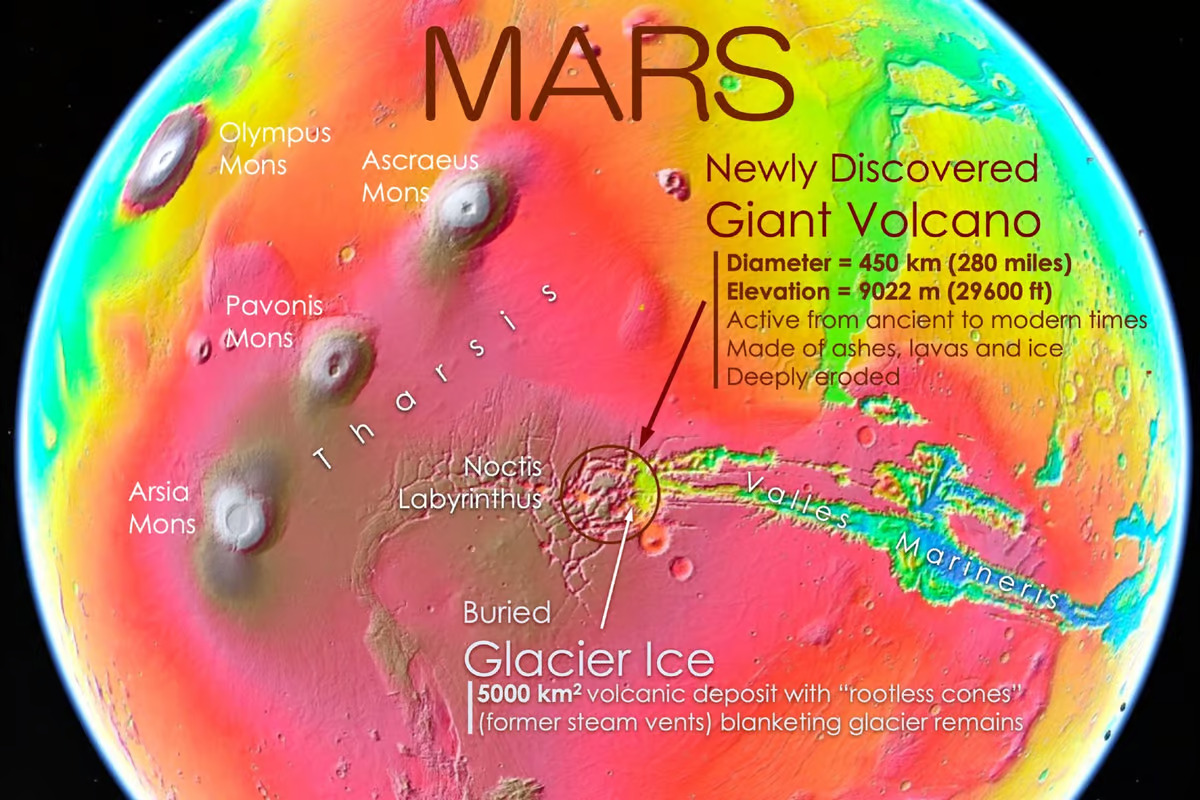 The newly discovered volcano has monster-sized company in the form of three other gigantic Martian volcanoes. Background image: NASA Mars Global Surveyor (MGS) Mars Orbiter Laser Altimeter (MOLA) digital elevation model. Geologic interpretation & annotations by Pascal Lee and Sourabh Shubham 2024 – View 3 Images –
The newly discovered volcano has monster-sized company in the form of three other gigantic Martian volcanoes. Background image: NASA Mars Global Surveyor (MGS) Mars Orbiter Laser Altimeter (MOLA) digital elevation model. Geologic interpretation & annotations by Pascal Lee and Sourabh Shubham 2024 – View 3 Images –
Since our Mars imaging experiments began with Mariner 9 in 1971, we’ve known that the Red Planet has seen its share of volcanic activity. In fact, in less than a year after it entered orbit, the spacecraft had already detected 20 volcanoes on the planet’s surface. While these volcanoes are generally consigned to ancient Martian history, just a few years ago, it was determined that a large lake of liquid water found beneath the ice at Mars’ south pole was likely due to underground volcanic activity. And more recently, it was found that a plume of magma is likely forcing its way through the planet’s mantle.
Adding more data to Mars’ fiery history, researchers have announced at the 55th Lunar and Planetary Science Conference that their newly identified volcano measures 9,022 meters (29,600 feet) in elevation and covers 450 kilometers (280 miles) in width. It has been temporarily dubbed “Noctis Volcano” due to its location at the boundary of the maze-like region of the planet called Noctis Labyrinthus and the huge canyons of the Valles Marineris. It is also located in an area hosting three other giant Martian volcanoes: Ascraeus Mons, Pavonis Mons, and Arsia Mons.
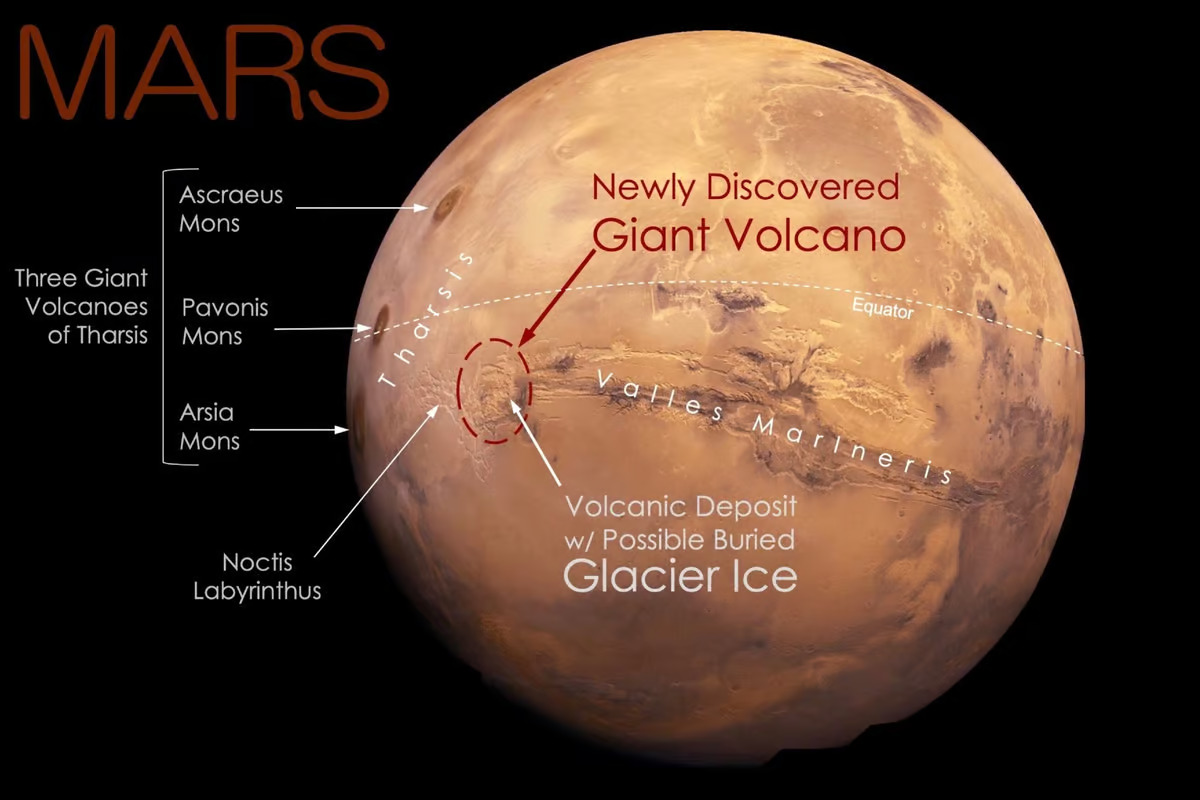
The researchers discovered the volcano almost by accident as they analyzed data from multiple Mars missions including Mariner 9, Mars Odyssey, Mars Express, and others.
“We were examining the geology of an area where we had found the remains of a glacier last year when we realized we were inside a huge and deeply eroded volcano,” said lead study author Pascal Lee, planetary scientist with the SETI Institute and the Mars Institute. Basically, the volcano is so massive that it was hiding in plain sight.
The researchers say that based on erosion patterns the volcano has been active for a very long time, and add they don’t as of yet have a guess as to whether it might erupt again. They do believe though, that the volcanic ash might well be hiding a large sheet of glacial ice beneath it, which could prove to be extremely important for future visitors to the Red Planet.
“This area of Mars is known to have a wide variety of hydrated minerals spanning a long stretch of Martian history,” explained Sourabh Shubham, a graduate student at the University of Maryland’s Department of Geology and the study’s co-author. “A volcanic setting for these minerals had long been suspected. So, it may not be too surprising to find a volcano here. In some sense, this large volcano is a long-sought ‘smoking gun.'”
To confirm that the geologic features they discovered were in fact indicative of a volcano, the researchers point to a central summit with slopes leading away from it in all directions to a distance of 225 km (140 mi). There is also a caldera remnant in the center, and the areas surrounding the volcano are rich in lava flows and pyroclastic deposits, a mix of particles spewed out from an active volcano including ash, cinders, and pumice.
Adding to the theory that there is ice beneath the volcano, the team also revealed that there’s a 5,000-sq-km (1,930-sq-mile) range of blister-like mounds inside the volcano’s perimeter, that were likely caused by steam venting that happens when hot volcanic material lands on a water or ice base.
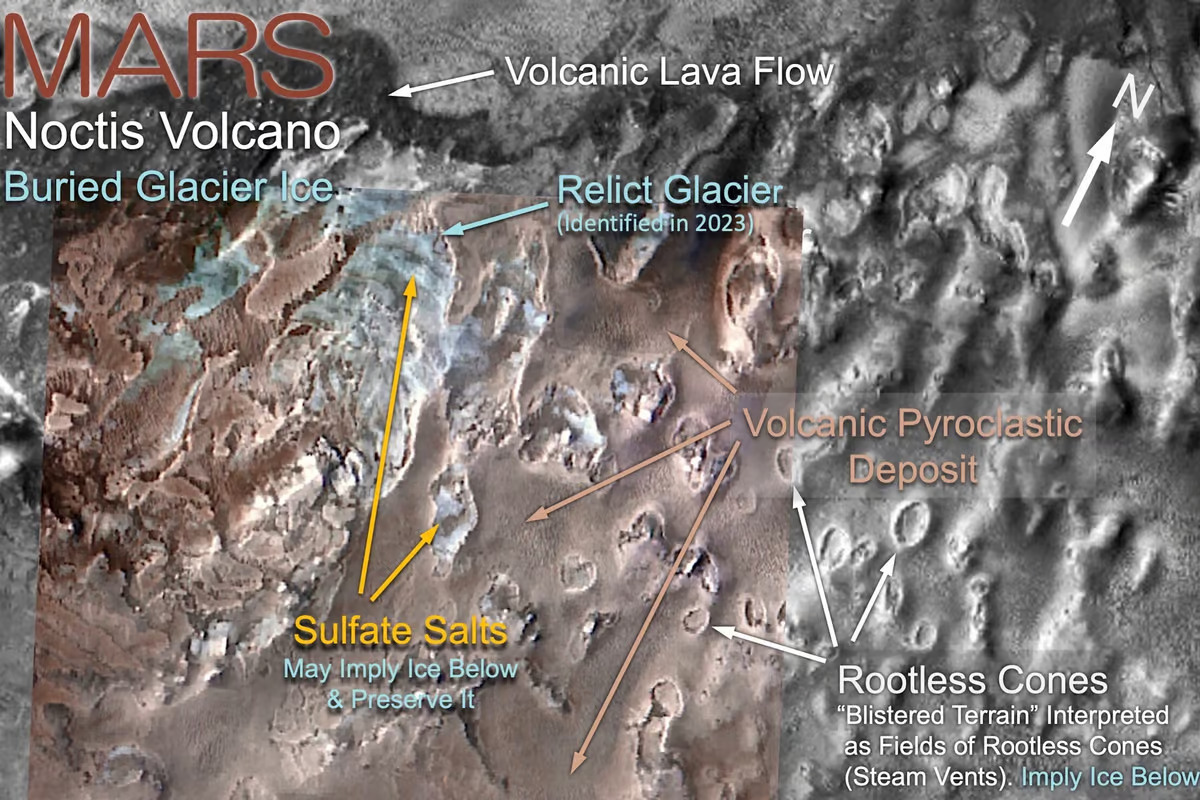
The fire-and-ice nature of the area has the research team excited to target it in future Mars expeditions.
“It’s really a combination of things that makes the Noctis Volcano site exceptionally exciting,” said Lee. “It’s an ancient and long-lived volcano so deeply eroded that you could hike, drive, or fly through it to examine, sample, and date different parts of its interior to study Mars’ evolution through time. It has also had a long history of heat interacting with water and ice, which makes it a prime location for astrobiology and our search for signs of life. Finally, with glacier ice likely still preserved near the surface in a relatively warm equatorial region on Mars, the place is looking very attractive for robotic and human exploration.”
You can read the research paper here.
Source: SETI Institute View gallery – 3 images
–











